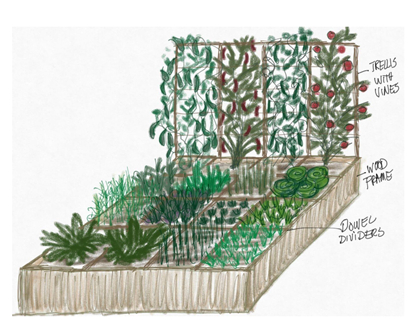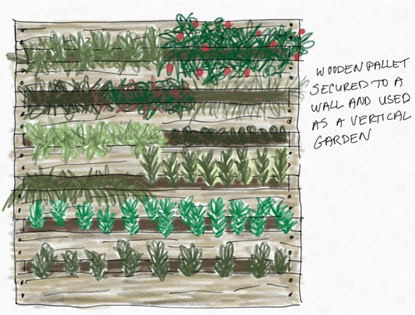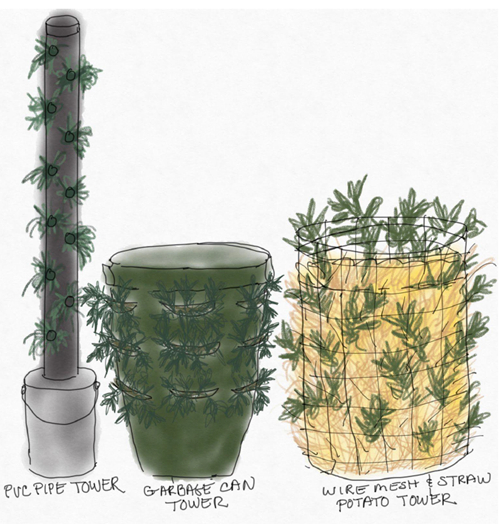
| Home | Source Reduction | Friends of Green Friends | Newsletters |
| Gardening | Resources | What You Can Do | Embracing The Trees |
| Growing Vegetables in Small Spaces |
 |
|
Tips for using garden space efficiently from MA Center San Ramon In the wake of today’s plight - namely the confluence of the COVID-19 virus, environmental issues, and widespread poverty - growing healthy organic food has become a critical priority for families and communities around the world. Even in the smallest of spaces there are ways to grow intensively and organically. Doing so, not only directly benefits us and our families - any surplus produce can be shared with those less fortunate in our communities, building a kinder and more compassionate world, a world that prioritizes sharing over hoarding. There are practicalities and benefits specific to growing food in small spaces. The general rule of thumb is 100 square feet of garden space grows enough fresh food for one person, for one season. However, using the principles of square foot gardening, that can be reduced to 16 square feet per person, or 1.5 square meters! If you only have a little space available and want to expand and intensify your existing growing area, you can look at combining square foot gardening principles, gardening in pots, vertical gardens, arbors and trellises. Outlined in this article are three main small space gardening techniques: (1) square foot gardening, (2) vertical gardening, and (3) tower gardening. |
|
Square Foot Gardening Some advantages of square foot gardens (SFGs) include:
You start by building a 4ft x 4ft raised bed and divide it into 16 even squares (1 square = 1ft x 1ft). You can use string or wooden dowels to divide the squares. When planting crops, keep in mind the size of the mature plant. Space accordingly using intensive plant spacing principles. Examples of these spacing principles include:
Crop rotation and adding sufficient compost becomes important in SFG, as you plant to ensure the soil is not depleted. Add trellises to grow vining vegetables upwards and increase their growing potential. |
|
Verticle Gardening Vertical gardening can be a useful standalone method to grow food in particularly small spaces. There are many ways this can be achieved using readily available materials. Some examples of vertical gardens are:
When using planters mounted on a wall, careful attention needs to be taken in regards to the weight of the structure and ensuring it is fully secured. |
 |
|
For maximum use of space, you can combine square foot gardening with vertical gardening. You can also try using pots and planters in the same way, expanding their growth upward to increase harvests. |
|
Tower Gardening An incredibly efficient use of space and resources, tower gardens allow for intensive growth using a very small footprint, and their construction allows for reduced water evaporation. Some advantages of tower gardens include:
Building a do-it-yourself tower garden can be a creative project, utilizing materials you may already have on hand. These can be erected vertically or horizontally. |
 |
| Home | Source Reduction | Friends of Green Friends | Newsletters | Resources | What You Can Do | Contact Us |
For more information, e-mail info@greenfriendsna.org |
||||||